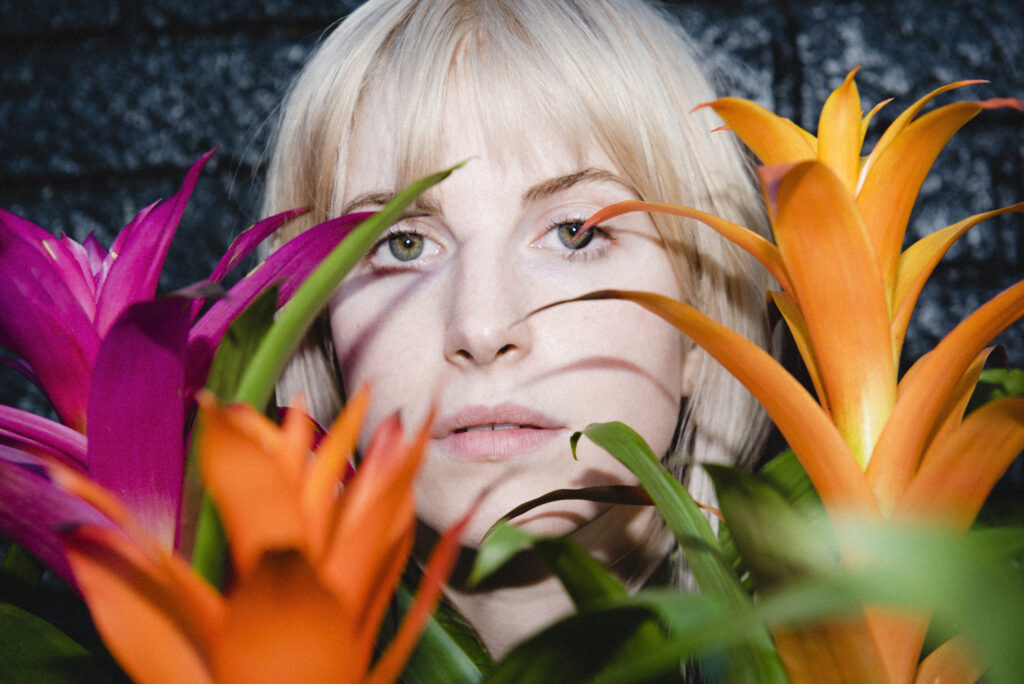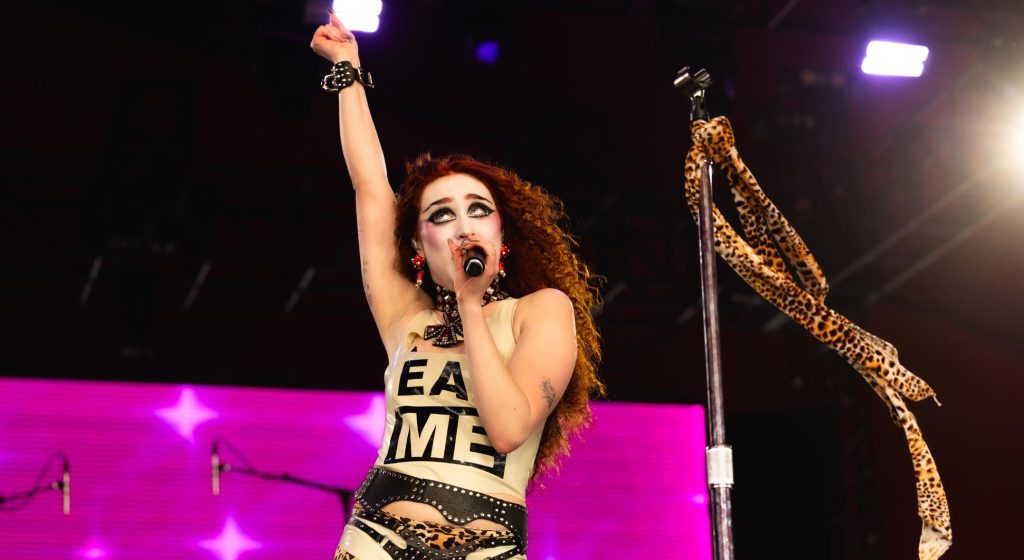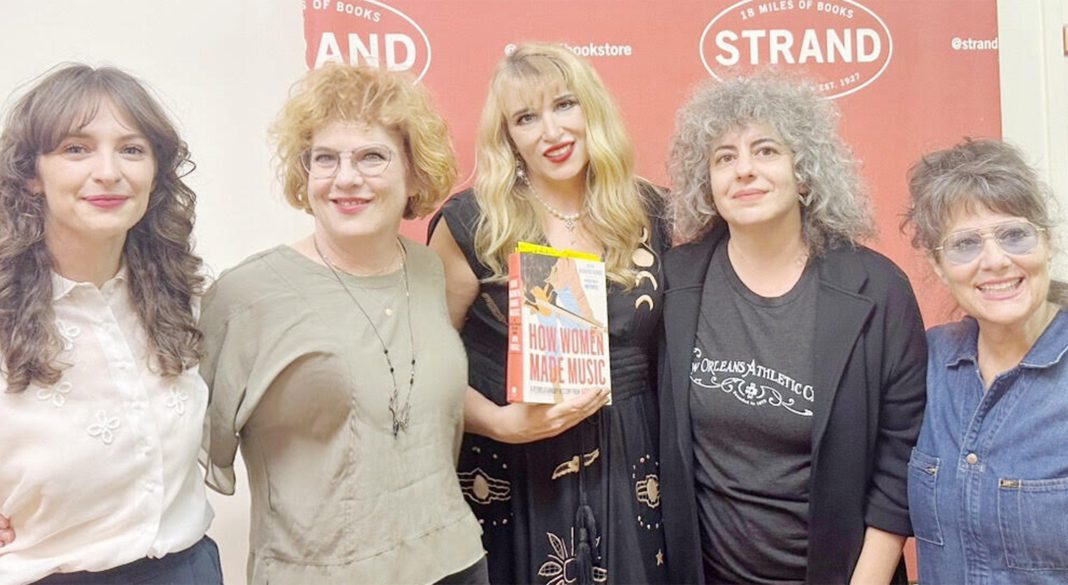If you’re working in music journalism (or are even just a fan of it), you’ll know that we’re fast approaching end-of-year list season: the time of year when people attempt to wrangle an array of entirely disparate songs or albums or artists into one neatly-definitive ranking. Its absurdity tends to prompt pretty passionate results, filtering down into stan communities, talent scouters and plenty more sectors of the industry.
Things have been improving in recent years, but for a long time, these lists also served to highlight just how often a ‘classic’ record also meant a ‘record made by men’. Through self-selecting bias, the dominance of mainly male music journalists picking mainly male-made albums served to obscure the contributions of women, reducing incredible songs and stories to ‘cult’ or ‘fangirl only’ status. Lists and awards aren’t everything, but over time, a refusal to give women artists their due ends up influencing the way they are appreciated in the wider culture, and the space that is given for women to enthuse about the artists that make them feel seen – two things that The Forty-Five was founded on. In the words of NPR Journalist Ann Powers, “The general history of popular music is told through the great works of men… without a serious revision of the canon, women will always remain on the margins.”
Launched in 2017, the Turning The Tables project began as a way for a group of NPR journalists to challenge this boys club, creating new lists and generally putting the spotlight back on female-made music. Now it’s become a beautiful coffee table history book, celebrating many of the musicians who have fought hard and brought untold value to the ecosystem of contemporary popular music. From Billie Holliday to Boygenius, Joan Baez to Carly Rae Jepsen, this lovingly compiled tome features new and old work from some of music’s most vital journalists, academics, editors and essayists — Ann Powers, Taylor Crumpton, Marissa Lorusso, Sascha Geffen and many many more who have paved the way for future generations of female and non-binary voices to break through into music criticism.
Put simply, it couldn’t really be more up The Forty-Five’s street. We chatted with editor Alison Fensterstock to get the lowdown on how it all came about, and what she hopes the future of music might look like with women at the helm.
Hi Alison! Could you tell us a little of the origin story of Turning The Tables as a series? What are your fondest memories of producing this series? What was the original motive, and how did you meet those original goals?
I used to work for a music festival in New Orleans that focused on less-well-known architects of American music, garage rock and R&B and blues and country; record-collector drool stuff. I organised the conference part where writers interviewed musicians, and one year I got Ann [Powers] to come be an interviewer, which was a bit of a coup since I think out of our whole interlocutor gang, I had only ever been given one other woman to work with; Holly George-Warren, who wrote about Willie Mae Thornton in a newly commissioned essay for this book.
Jill Sternheimer, the co-founder of Turning the Tables, is a lifelong concert presenter, and she had partnered with this fest, the Ponderosa Stomp, on a few events up there. Ann and Jill went to see Barbara Lynn, the left-handed guitar slinger from Beaumont, Texas (whose ‘Baby, We’ve Got A Good Thing Going’ was covered by the Rolling Stones) and we were just blown away. Ann and Jill wondered why Barbara, the extreme badass, wasn’t better known or more appropriately lauded, and that led to a conversation about all the other women performers who can’t get into the crowded room of Most Important/Super Greatest/Extra Best/whatever musicians. Why does every ranked best-of list in history have maybe a Bonnie Raitt or an Aretha or a Joni Mitchell but probably only one or two of those in the top twenty at best, and for that matter, what about the Barbara Lynn of it all?
Turning the Tables started with a list — the 150 Greatest Albums by Women — because the list is the common medium for music people. It was a way of speaking the language of the existing conversation and also a way of reclaiming. The idea was to simply remove men from consideration and see what shook out – to sort of shatter this very calcified canon consensus that the ‘Best Ever’ were simply ‘This Man and That Man and also Another Man’. What if they just couldn’t play today? What if they had to sit this game out? As it turned out, and as Ann and Jill suspected, the story of popular music and all its benchmarks and innovations and explosions, could be told via the art of people who are not men.
What was public reaction like to Turning The Tables’ launch? Did you experience any pushback for choosing to centre women in this way?
Music people love lists, and after the 150 Greatest list was published in 2017 the internet lit up with lists made in response or solidarity or fun (like Jezebel’s list of the 150 Worst Albums by Men; thank you Jezebel!). It’s worth mentioning that Turning The Tables itself immediately subverted the whole ranked, hierarchical edict from on high tone of a List and started publishing planned “Shocking Omissions” essays – arguments for albums and artists who had not made our list. This set the tone, I think, of conversation rather than declaration for the whole project. It underscored that the canon is mutable and nuanced and fluid – it is not a Mount Rushmore where Neil Peart’s face cannot be uncarved from the granite!
For the overwhelmingly most part, I remember people “yes, and” ing us with lists of best obscure punk albums by women or best jazz or best African music online. Digging into what we enjoy for the purpose of making lists is catnip for music nerds, and I think this list rewired their/our brains in an exciting way, helping them rethink the whole idea of what is the “best” in the flurry of inspiration to chime in with what they liked. There were some unfortunate DMS and tags, but in the world of being female talking about music or anything online, that is what I believe is called “every day.”
In terms of putting a book together, how did you decide on the structure, and what to pull from the archives/commission anew? What narrative thread or thematic order weaves the entries together?
I got a brief memo from NPR Music suggesting we use themes instead of genre or chronology, and I ran with it. It became clearer and clearer as I worked that this was the best way to tackle the super-hybrid, super-fluid, multimedia project like Turning The Tables with the aim of making it a successful book. I hope that the thematic organization sparks new connections and possibly discoveries in readers – that they see how artists have encountered similar problems and made similar revelations and addressed similar challenges over the years, and also passed traditions down, adding and reshaping and echoing and taking inspiration. Working with the NPR broadcast archive (50+ years!) was amazing in that I got to hear all of that in artist’s own voices. It was like time-travelling, setting up (or observing!) meaningful conversations across decades between artists and listeners and critics.
Picking favourite essays from the book would be a cruel question, but were there any pieces that you feel would surprise people to read today? Or any works that solidified your own perspective on an artist whilst editing?
This was a group effort all the way, from the genesis of TTT to the actual book-making. Besides all the feminist ideological reasons why it needed to be multi-voiced, it also needed to be that way because no one critic is going to be thoroughly literate on every artist. One essay that comes to mind for me is Jenn Pelly on Hayley Williams from Paramore – I totally missed Paramore as a thing, but they were formative to Jenn, who I think is around ten years younger than me, and it was cool and rewarding to learn about that segment of the pop history arc. I (and everyone, I think – it’s consistently one of the top pieces on NPR Music) also cannot get enough of Talia Schlanger’s wonderful essay on Meg White, whose perfectly hypersimple drumming is still a topic of derision from music dudebros, even as recently as last month in NPR Music’s Instagram comments. Talia breaks down how and why Meg’s restraint and limitation were actually virtuosic. On a macro scale it’s also a great investigation of how bands work and how art works overall; why the right things in the right combination at the right time are often more transcendent than pure technical chops.

The book also features the list in which you declared Rihanna as the 21st century’s most influential artist, a belief that I know Ann and Marissa have spoken about still standing by today. What is it about Rihanna that you think puts her in this standing?
I’m not a deeply knowledgeable Rihanna fan, but I found it really interesting to think about Rihanna’s semi-recent retreat from the spotlight in light of Jenny Gathright’s essay about appreciating – actually, she uses the word loving – Rihanna the person. That’s prompted by Rihanna’s own insistence on putting herself out there as very “real,” often full of contradiction and the dramatic mess of life, as opposed to acting on a polished script or persona. I think now that looks to me like an avant-garde version of a very welcome trend toward trying to understand artists as real humans and show them grace. Being understanding of Chappell Roan’s gig cancellations to try to prioritise her mental health, understanding what the demands of life in the spotlight did to Prince and Tom Petty’s bodies, even understanding Patti Smith’s retreat mid-career to raise her kids as something human and normal and not some kind of feminine weirdness or weakness…talented humans aren’t superhumans!
Speaking of Chappell Roan, which new artists do you see entering the canon of women’s musical history? Which female and non-binary artists are exciting you most in 2024?
I’m definitely a recently-minted Chappell Roan stan! I keep getting asked about this apparently novel period of women dominating the pop charts, e.g. Chappell, Charli, Sabrina and Olivia rising to join Taylor and Beyoncé, and I realised it reminded me somewhat of my childhood listening to Madonna, Cyndi, Paula, Janet and Whitney et al. So turns the wheel!
I’m also into the guitarist Marisa Anderson and the jazz harpist Brandee Younger. I should say too that in midlife myself, I’m very interested in how artists I heard when they were young might evolve as they “grow up”. So much great work is made mid-career and later, but the marketplace often seems like it doesn’t seem to know what to do with women in their 40s and 50s. Hopefully, this will change, but I’m hoping for a great crop of perimenopausal-era art from folks who initially emerged around Y2K.

As you mentioned, artists enforcing boundaries has been a big talking topic of 2024, as well as the relationship that stan and fan communities have with journalists. What do you hope to see from music journalism as we enter the second half of the decade? What advice would you give to women and non-binary folks looking to break into the industry in this complex climate of limited budgets, doxxing and parasociality?
I think the boundary issue is so important for performing artists and other public figures, as I alluded to earlier re: Rihanna and Chappell, and also, of course, the artists we’ve lost early in part due to the demands of fame. And it’s also an important thing to address for “public figures” like critics and reporters – I think it is such a weird, crappy thing that you might choose to be a writer because you communicate best at a certain remove with the written word, and then it turns out if you have any success or if you want to then you have to cultivate these weird parasocial relationships with readers on social media. It’s draining, often harmful and it seems like that shouldn’t have to be the deal (unrealistic, I know.) I think we’re at least getting closer to understanding we are a world of actual human beings who need to have reasonable and kind expectations of one another – an important backlash to early social media culture with its total revealings and total accessibility.
Regarding your reference to layoffs and limited budgets, the disintegration of the late twentieth-century arts media model is a whole other thing. I wish I had a crystal ball to tell me what shape a healthy arts journalism might take, hopefully using the good parts of all our available tech and repudiating the harmful ones, like the dumb parasocial “be a brand” model, which already seems to have diminishing returns. But people will continue to make art and other people will be moved enough by it to want to make their main activity (job) responding to it. I can only hope necessity will mother a better invention of how to do that.
Answers have been condensed for clarity.
NPR’s ‘How Women Made Music’ book is available now from Harper Collins.






